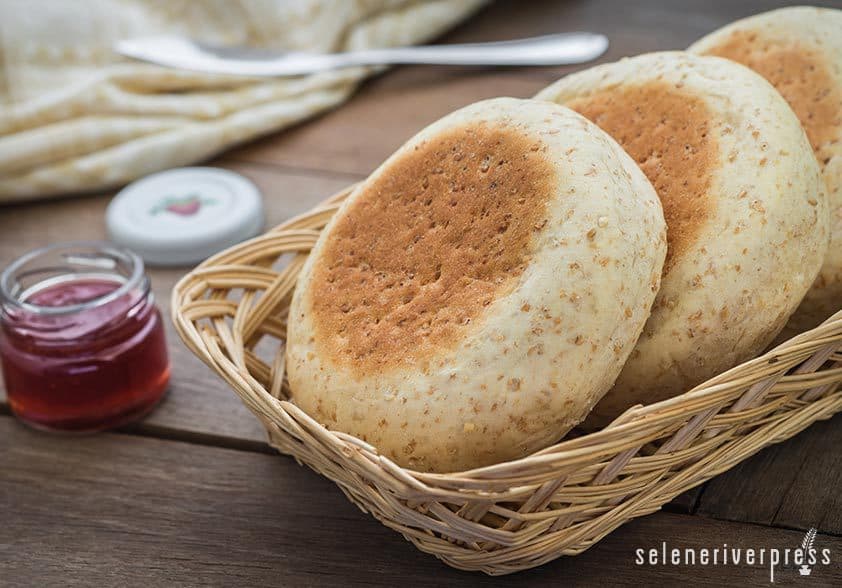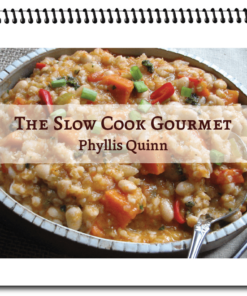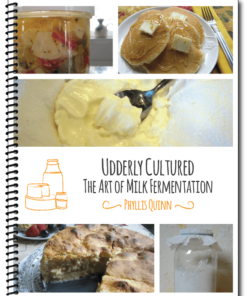Ask Chef Phyllis
Everyone knows that English muffins came to America with Samuel Thomas. Everyone knows they’re a pain to make….kneading, rolling, cutting, and griddling. So I decided to make English muffin bread. That sounded like a solution. I tried six different recipes, some old, some new. Easy by definition, yet not so easy as the ones I tried didn’t produce the nooks and crannies—after all, that’s what I wanted. Do you have a tried–and–true recipe for one last attempt?
—Lisa Mairi Campbell, Baldwin, Wisconsin
It’s a timely subject you’ve opened, Lisa. Everyone is short of time and looking for less work, not more. And as you know, we can find recipes for just about anything online, including English muffins (and English muffin bread). Dozens of options pop up, but most people only attempt the first recipe they see. I admire that you tried six!
A little background check confirms that Samuel Bath Thomas introduced English muffins in his New York bakery around 1880, with great success. It’s no wonder—English muffins are uniquely different, and they’re oh-so-laborious for the home baker to make.
As the story goes, Thomas was trying to duplicate a half-remembered crumpet recipe from his mother. But when his batter failed, he put the loose dough into a ring mold to contain it. He then fried it on the griddle, which gave it the nook and crannie texture we all love. This is what he called his “secret method.” The rest, as they say, is history!
But not so fast. English muffins have a humble beginning that may be much older than Samuel Thomas’s version. In castle keeps, the kitchen help (downstairs servants) of grand estates would eat whatever the cook or baker fed them. Leftover scraps of bread dough, biscuits, cakes, and even mashed potatoes or corn meal would be thrown on a griddle (never baked, which takes too much time) for fast service to the hungry house workers. These “English muffins” were served as “break fast” with leftover honey, marmalade, or jam from the elaborate tea service of the noble gentry. How convenient.
The muffins eventually became popular among the city’s poor. Hawkers toasted them over an open fire and sold them door to door and out on the street—which gave us the legendary “Muffin Man” song.
We love English muffins for their crunchy crust, chewy interior, and famous nooks and crannies. This same great quality is achieved in an amazingly quick, super easy loaf bread. Enjoy!
English Muffin Bread
Chef’s note: Toast this bread twice as long as you would conventional English muffins. Serve with butter and your best jam, preserves, or marmalade. (I like this bread for English cheese toast too, but that’s another recipe.)
Time: 1–1½ hours (includes prep time)
Ingredients
5 cups bread flour (I used King Arthur’s)
1½ tablespoons instant or rapid-rise yeast
1 tablespoon coconut sugar (you may substitute honey)
2 teaspoons sea salt
1 teaspoon baking soda
3 cups hot whole milk (120°F)
Soft butter, for greasing pans
Non-GMO cornmeal for dusting pans (optional)
Special equipment: 2 (8½- x 4½-inch) loaf pans
Instructions
- Combine flour, yeast, sugar or honey, salt, and baking soda in a large bowl. Mix in the hot milk until combined. Cover bowl with plastic wrap and let rise in a warm place (80°F) for 30 minutes, or until dough is bubbly and doubled in size.
- Grease loaf pans with butter. If desired, dust each pan with a tablespoon of corn meal, tapping out the excess. Set aside.
- Stir the dough. Divide between prepared loaf pans, pushing dough to the corners with a greased rubber spatula. Pans should be about two thirds full.
- Cover pans with greased plastic wrap. Let dough rise an additional 30 minutes.
- Adjust oven rack to middle position. Preheat oven to 375°F.
- Discard plastic wrap. Bake loaves for 30 minutes, rotating pans midway through baking time.
- Turn out the breads onto a wire rack. Cool completely (about 1 hour) before slicing, toasting, or serving.
Image from iStock/Amarita.





